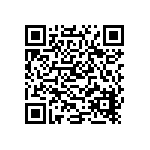Taken from: http://rollingplanet.net/wp-content/uploads/2015/03/beipackzettel.jpg
Many pharmaceutical companies provide electronic versions of their patient information leaflets (PIL) to their patients by presenting them in the form of a PDF on their own websites, adding them to a
mobile application or providing them to pharmacies or agencies, which in turn would host the PIL on
their websites. This service is of great benefit to patients who lose the paper version provided in the
drug packaging and for those who prefer to access the information online at the time they most need
it. As the majority of people now own smartphones, it only seems timely to provide such an online
solution.
This web and mobile-based solution force the regulated pharma companies to classify their
computerized systems, including website and mobile apps, as GxP relevant and comply with
computerized system validation requirements. As the information provided in the PIL relates to patient safety, product quality and data integrity, the regulated pharmaceutical company is responsible for its validation and ensuring that the online solution is fit for purpose. They must also comply with regulations and industry standards together with guidelines such as the industry best practice (GxP).
The question is, what regulations are relevant for these kinds of solutions, and what business processes
must be in place to ensure compliance with current regulations and industry best practices?
What information on the PIL is GxP relevant?
The PIL is an obligatory document added to the packaging of pharmaceuticals providing information
on the characteristics of a product in a patient-friendly form. The contents of these PIL’s are defined
by Law e.g. in Germany by the “Law on trade in medicinal products, §11 – Leaflet” or by the “World
Health Organization (WHO) Annex 9 – Guidelines on packaging for pharmaceutical products”. These
regulations aim to secure the standard of PILs by regulating the content they provide, enforcing the
pharmaceutical companies developing and distributing medicinal products to include e.g. the following
information in their PILs:
• Exact identification, substance group and mode of action of the substance, its’ fields of application
• information required to be known before intake, e.g. contraindications, type and duration of usage, frequency and dosage
• Side-effects and their description
• Reference to the expiry date of the medication
• Date of the last revision of the PIL
The information provided in PIL is, by definition, GxP relevant as it contains instructions about the
dosage, usage, side effects and expiration date of the product, which can have an impact on patient
safety and product quality. Furthermore, the content must fulfil current Health Authority expectations
(e.g. by FDA and EMA) on data integrity and compliance with GxP. This has been required for printed
PIL’s within the packaging of products (all along) and certainly is a requirement for electronic versions
of these PIL’s (ePILs), regardless of how they are provided to the patient.
What is the regulatory and quality control effort for a GxP classified computerized system?
Any GxP relevant computerized system must comply with industry best practice and standards. As any
system providing ePILs is classified, a GxP relevant computerized system, its infrastructure and
installation must be qualified and its business processes and supported online solutions must be
validated. This includes the database, the website or app itself, and all business processes related to
the preparation of these ePILs. The fact that all computerized systems related to this application must
be validated (sound) appears like a lot of work, however, the effort required for this validation should
be rather low. The IT solution should be tested and the relevant business processes from ArtWork to
Regulatory Affairs to Commercial related to PILs must be implemented.
Pharmaceutical companies must overcome some unique challenges if they want to provide
electronic versions of their PILs on their platform of choice. For example, they must ensure an up-to-date version of each ePIL is uploaded, which requires the connection to their master documents.
In other words, an end-to-end process needs to be in place to ensure that the information provided in
the ePIL is up-to-date. It has occurred before, where pharmaceutical companies published out-of-date versions of these leaflets online, (resulting in) the consequence is that the company had to inform the FDA of the incident and had to remove the leaflet immediately.
Electronic Patient information leaflets – How to overcome these challenges with a state of the art technical solution?
The ePIL is the next generation of patient information leaflets and TiBtix provides an IT solution based on QR-code, Content/Document Management standards and BlockChain technology to overcome the above-mentioned challenges.
The future is where patients purchase a drug and the PIL contains a QR code for you to scan, which connects you to a website providing an electronic version of the document. This way, patients have full access to
the information stored on these ePILs whenever they need it. This also benefits patients who run out
of the product as the information is available to repurchase it when required.
Moreover, these ePILs will be continually updated and new important information e.g.
batch recalls and additional information can be added by the pharmaceutical companies as needed
providing reassurance to the end-user.
This solution offers benefits to the pharmaceutical manufacturer and the patient. It provides
the manufacturer with a simplified method to comply with FDA regulations and an effective method of communicating updates etc with their customers. The customer benefits by being in control of
accessing the relevant information with ease when they most need it and being able to reference it for future use. Get ahead of your competition! KVALITO will help you to master the challenges of quality & compliance of all systems & processes required for the realization of electronic patient information leaflets. Feel free to scan the QR code on the bottom of this page to find out what an electronic PIL could look like!

Link to TiB (with Login): https://www.tibtix.com/tt/ib/1e047bbb-0601-40a9-a5b3-635a21fe2f63
Author: Kristina Halbleib, Life Science Consultant KVALITO






